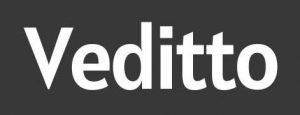In the eyes of a trader, an honest and reliable broker is not only a stable service provider with a user-friendly interface and profitable commissions. The speed of order execution and the absence of slippage both play an important role. That is, the broker should first of all think about liquidity aggregation.

What is liquidity aggregation?
Aggregation is the combination of elements into a single system. Liquidity is the ability to quickly and easily exchange one asset for another. Liquidity aggregation is the systematization of offers to buy or sell an asset from suppliers and the provision of these offers to interested market participants. The main purpose of aggregation is to give the broker’s clients an opportunity to buy assets at market prices.
What functions do hubs perform?
Hubs are control centers, liquidity-oriented software. Hubs perform the following functions:
- Liquidity aggregation with additional features (spread setting, client margins, multiple price channels, etc.).
- Risk management based on the flexible use of the A-book and B-book models. For example, by redirecting traders between A/B books depending on the trading strategy and market volatility, or through a model change when the established volume limit is exceeded.
- Automatic switch to another LP if the data flow from the main liquidity provider suddenly stops.
- Reporting and monitoring. The hub provides an interface for risk assessment, summarizes statistics in convenient databases, and allows viewing logs.
A properly selected liquidity management hub ensures the reliability of the services provided by the broker, optimizes risks and increases the level of customer loyalty. More details are available at https://takeprofittech.com/.
Overview of liquidity management tools
The optimal set of broker solutions includes two elements:
- Liquidity aggregation hub. A hub’s key feature that needs to be considered when choosing, is the price/functionality ratio. Available providers, a clear interface, and quality of support are also important.
- Liquidity bridge. A server plugin that redirects trades between A-book and B-book without restarting.
The advantage of working with a technology provider vs. maintaining your own developer team is the fresh perspective and experience in developing versatile solutions. In addition to implementing ready-made solutions, the developer can upgrade software products to the broker’s requirements.
How to choose a software provider
The criteria to use when selecting suppliers are market experience, supported assets, fault tolerance, results of software implementation by other brokers. Also important are the conditions for the subsequent software support, the possibility of customized function adjustment, the quality of technical support and the price.
The Liquidity aggregation page provides a comparative analysis between three competitors – Takeprofit Hub, OneZero, and xCore. A broker can decide which additional features are of paramount importance to them, and which can be dispensed with.
You can learn more about the Liquidity Bridge functionality at https://takeprofittech.com.






![30+ Generative AI Tools for Content Writer [2023] Generative AI Tool for content writer](https://i0.wp.com/veditto.com/wp-content/uploads/2023/08/ai-tool.jpg?resize=324%2C160&ssl=1)
![Soul App Review [2023]: Discovering the Immersive Social Metaverse](https://i0.wp.com/veditto.com/wp-content/uploads/2023/08/SOUP-APP.jpg?resize=324%2C160&ssl=1)












